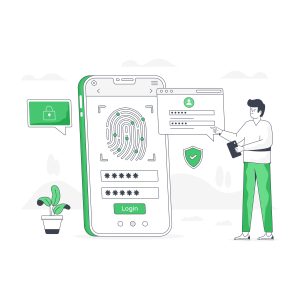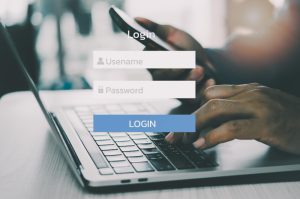SIM swapping isn’t a thing of today. It has left many bank accounts crying for help. When a fraudster takes control of your customer’s phone number and accesses their accounts, they can clean out everything faster than the customer can say “I’ve been scammed.”
Recently, we took our curiosity to Twitter where we got a link to a publication by an industry expert. According to the expert, some retired couple in the US had lost a huge $70,000 to fraudsters through a SIM swap scum.
This incident seemed intriguing. Just like this couple, your customers are mobile users, and bank account holders, and often access their funds through USSD or mobile banking.
Many Lessons to Your Institution Here
1. Your Customers’ Accounts Are Vulnerable
The fraudsters in the US case gained unauthorized access to the victim’s mobile account. Subsequently, they accessed their bank accounts. Ideally, you need to enhance your financial institution’s mobile banking security measures. That way, you will safeguard your customers’ accounts, because you recognize how mobile and banking services are interconnected.
2. You Need Robust Authentication Protocols
These fraudsters successfully manipulated the SIM swap process. That should tell you the potential weaknesses of mobile banking authentication protocols. If the scammers find it very easy to deceive mobile carriers, what of your customers’ financial accounts?
You must install authentication processes in your mobile banking services. And that means incorporating multi-factor authentication and other security layers. You intend to prevent any unauthorized access.
3. Educating Your Customers is Key
Your customers potentially lack awareness about the risks of SIM swap scams. And it’s possible to tell that these victims lacked adequate information about such security threats associated with their mobile accounts.
It is your responsibility as a financial institution to provide your customers with clear information on potential risks. Plus, the steps they can take to enhance their account security.
In an almost similar incident,
Detectives established that many Kenyans have often been defrauded by the multi-faced gang. The DCI appealed to anyone who has fallen victim to the SIM-swapping syndicate to report such an incident to their headquarters.
– The Directorate of Criminal Investigations (DCI)
Much Has Been Going on Behind Closed Doors…

Nearly 10 years ago, that is not what it used to be. Banking was a little bit secure. Fewer trust issues, or advanced security measures. Those good times are gone. Digital banking has been destabilized by SIM Swapping. The criminal activity requires a bit of tech savvy to pull off.
If banking is all about advanced security and trust:
- How do you differentiate yourself as a financial institution from your internal or external rivals? Your competitors are also vying for market share.
- Do you bank on sufficient solutions to deliver a satisfying consumer experience?
- Should your clients learn this the hard way since you cannot guarantee 100% fraud protection in multi-player ecosystems?
How Does the SIM Swap Scheme Work Then?

With that said, SIM swapping happens when a scammer contacts your customer(s). The scammer tricks them into activating a SIM card that the fraudsters have. Once this is done, the scammer gains control over their phone number. Anyone calling or texting this number will contact the scammers’ device, not your customer’s.
Fraudsters use this technique to get around the restrictions of your customer’s mobile operator. For example, the operator might limit the amount of time your customer can use a SIM card. And this brings us to phishing, which is the most common threat in cybersecurity.
Phishing
 The criminal actors typically use phishing, insider threat, or social engineering strategies to carry out SIM switch schemes. They pretend to be the victim and deceive your customer into changing their phone number to a SIM card in the criminal’s possession.
The criminal actors typically use phishing, insider threat, or social engineering strategies to carry out SIM switch schemes. They pretend to be the victim and deceive your customer into changing their phone number to a SIM card in the criminal’s possession.
 Surprisingly, the criminals mostly pay off an employee of a mobile carrier to carry out the schemes to change the victim’s mobile number to a SIM card in their possession. They frequently trick the employees into downloading malware used to infiltrate cell carrier systems that perform SIM swaps using phishing methods.
Surprisingly, the criminals mostly pay off an employee of a mobile carrier to carry out the schemes to change the victim’s mobile number to a SIM card in their possession. They frequently trick the employees into downloading malware used to infiltrate cell carrier systems that perform SIM swaps using phishing methods.
There’s more to that…
According to the Federal Bureau of Investigations, the burglar redirects your customer’s calls, messages, and other data to their cell phone after switching the SIM. This switching enables the hacker to contact the victim’s email and other online accounts linked to their phone number with “Forgot Password” or “Account Recovery” queries.
Every mobile developer knows this.
Why? The hackers rely on set two-factor authentication (2FA) that sends a link or one-time passcode to the victim’s now-owned phone number. The perpetrators use these codes to log in and change passwords.
What are the risks of SIM swapping?
SIM swapping can be very costly. Take the latter case in this article, for instance. Detectives from the Central Police Station have arrested many suspects in connection with sim-swapping cases targeting unsuspecting members of the public. Lately, the public has been experiencing increased theft of money through fraudulent banking activities.
How to Save Your Customers from Falling Victims of SIM Swapping
Here’s how you can protect your customers from losing their hard-earned money:
1. Biometric Authentication

-
- Your mobile banking solution should have biometric authentication methods, i.e., fingerprint or facial recognition. This security feature gives your customers an additional layer of security. The result is an impenetrable mobile banking app even if the hackers have control over the SIM card.
2. Multi-Factor Authentication (MFA)

-
- Enforce more locks for every critical transaction. Instead of just a single pin or pattern, MFA builds on the security by asking for something else. You can think of how a fingerprint, a special code, or something only your customer would know can go a long way to prevent an attack.
3. Secure Registration and Verification

-
- You can implement measures to verify users before they can link their mobile numbers or change any associated information.
4. Transaction Verification Alerts

-
- This sounds like what you need not to miss in your mobile banking security measures. When you enable real-time transaction alerts for your customers, you notify them of any transactions or account changes. That is a heads-up to users to quickly detect and report any abnormal activities, i.e., unauthorized SIM swaps.
5. Device Recognition and Profiling
-
- Recognizing and profiling help you to identify any unusual device behaviour. This feature enables you to track your customer’s device regularly and send alerts for any suspected changes, i.e., location or sudden device change.
What Else Do You Need to Know? – 2FA
(2FA), also known as dual-factor authentication, is a security system through which a user trying to access a system or application is verified in two distinct ways instead of just a password.
No PIN, code or OTP should be exchanged over the air.
Time for a Real Mobile Banking Transformation

NLS Tech Solutions knows that SIM SWAP is a real concern, and very difficult to detect. That’s why the NLS tech team has developed a flexible, secure mobile banking solution. This solution is based on a scalable system and your customers can access your mobile services via USSD or Mobile Apps like Android.
The solution is fully integrated with SIM SWAP API from the Telcos and can detect and prevent related fraud. Its customer-centric design also ensures it has all the features needed to fulfil all your technical business requirements.
Find Out More…
Talk to us directly at +254-20-263 2768 Or Email Our Business Development Manager at sales@nlske.com







